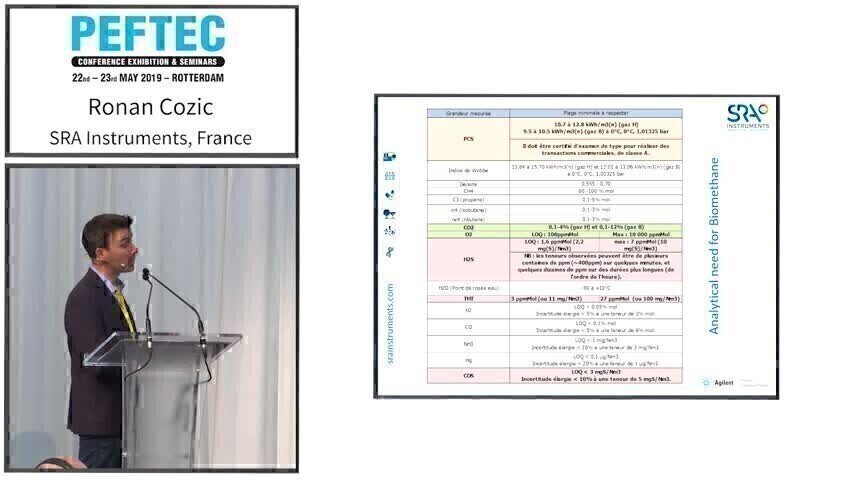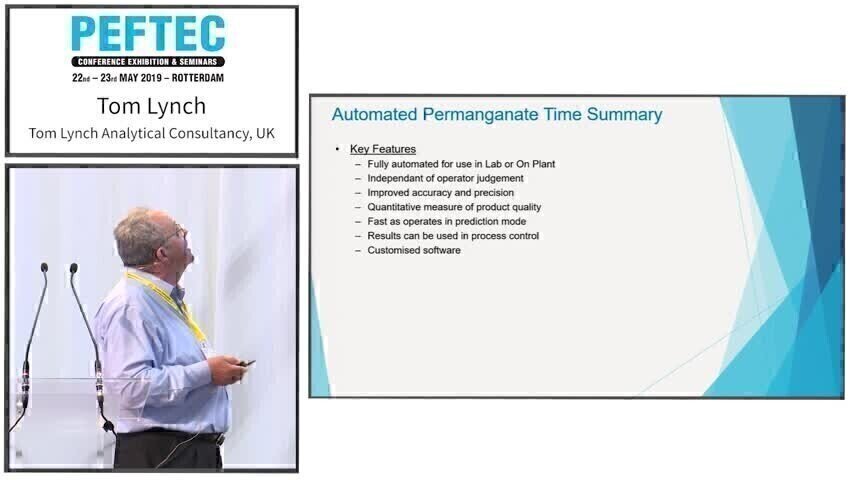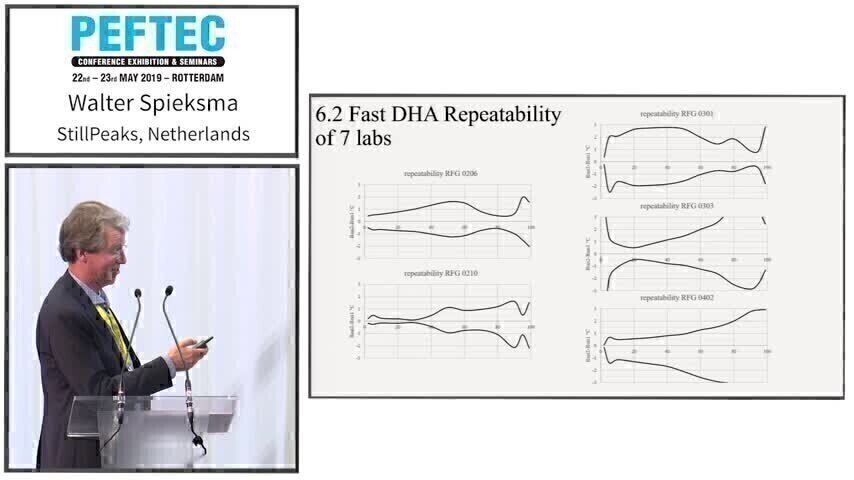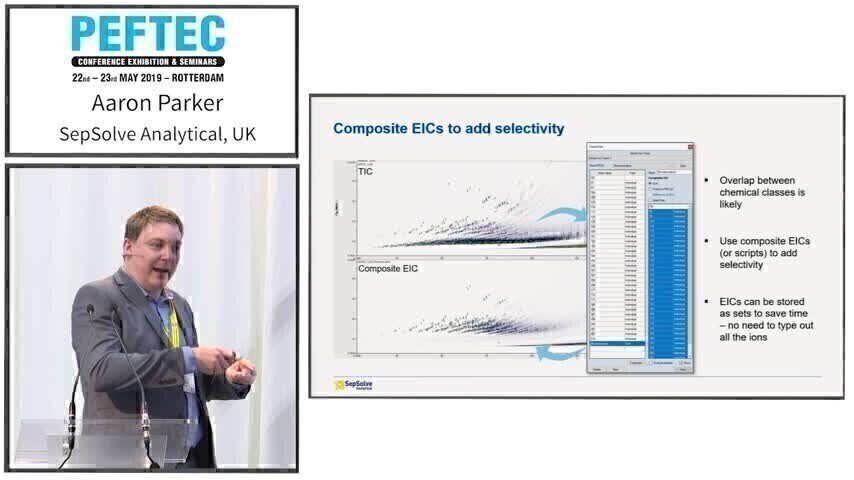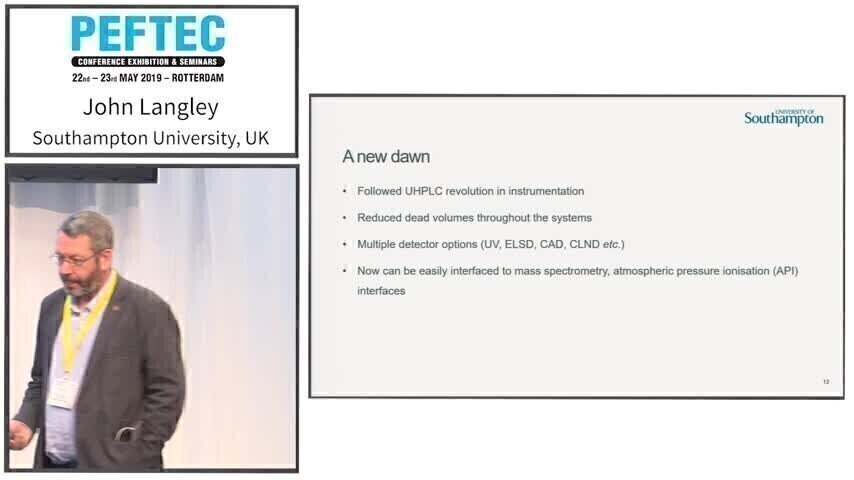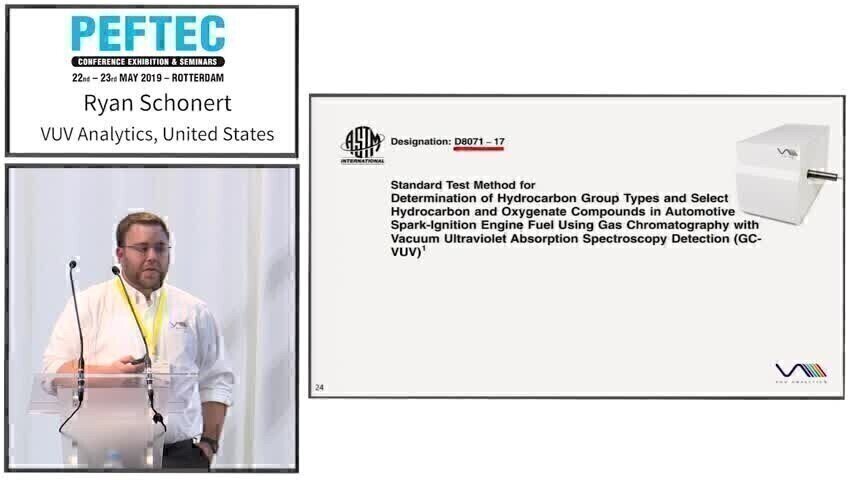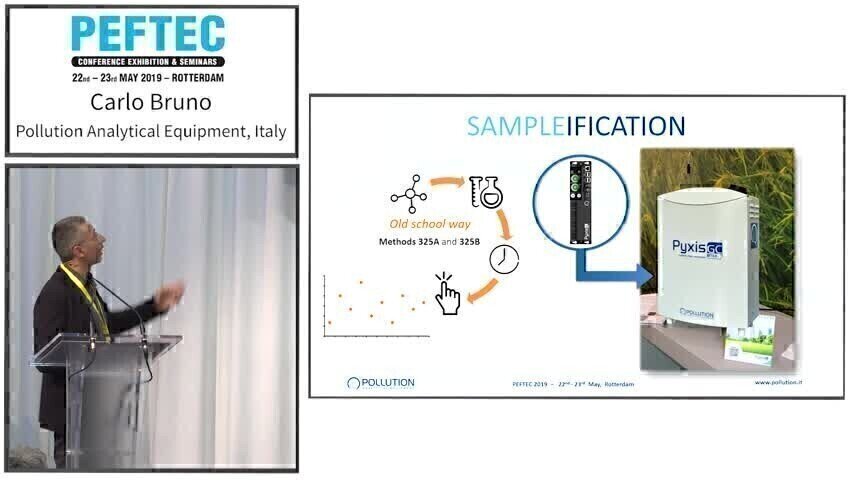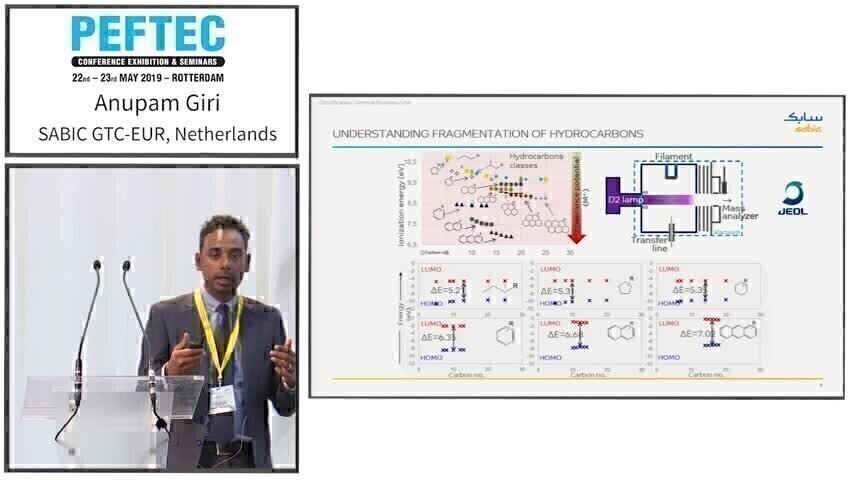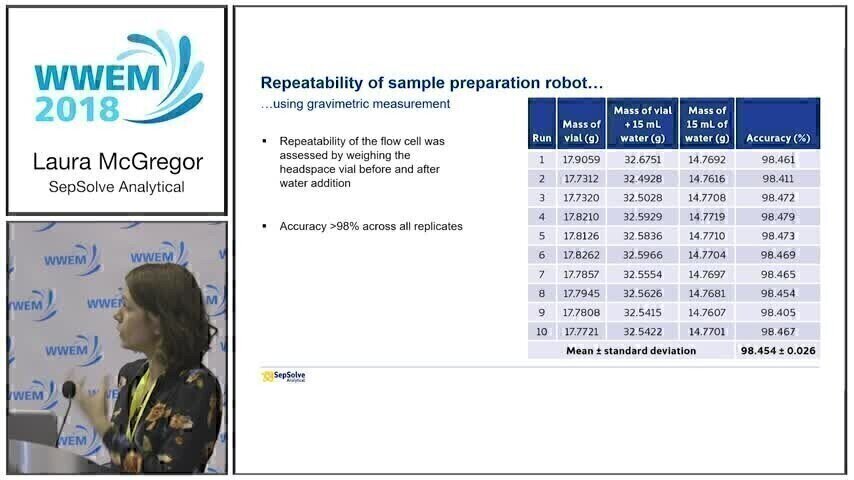E-Learning
Videos
Past Events
The determination of water content in alcoholic beverages, solvents and various consumer products such as foods, fuels, pharmaceuticals, and petroleum products is one of the most common types of chemical testing. Many techniques such as gravimetric analysis, gas chromatography (GC), Karl Fischer Titration, near infra-red spectroscopy, and others have been used for water quantification with good results. [1] However, the limitations of these approaches can include high limits of detection, lar...
Using Free, High-Performance, Computer Modeling Software to Simulate Gas Chromatographic Separations
A Recently developed, free to use, web-based computer program has been employed to accelerate Gas Chromatography (GC) method development by direct simulation of the chromatographic process. The program makes use of a highly accurate time-summation modeling approach, coupled with large libraries of data to provide absolute retention time predictions within 1% of those obtained from experiment. The user is able to directly control every parameter of the chromatography being modeled includi...
Owing to the high complexity of the matrices to be investigated, petroleum industry has to face a tough analytical challenge when a detailed characterization is required or not. It can be the case for different reasons such as to reach for the specifications of final fuels and products, to improve and evaluate the effectiveness of processes or additives, to monitor the ageing of fuels and lubricants...The implementation of chromatographic techniques has long been mandatory to reach for the hi...
The use of chromatography in all of its forms is a powerful and widely recognized practice in petrochemical research. Due to the continuous optimization of instrumentation and columns, substantial progress in terms of separation efficiency and selectivity, speed of analysis, and sensitivity has been made over the last decades. Many petrochemical products and derivatives thereof are generally complex due to presence of a large number of compounds with varying physicochemical properties. Moreov...
In this presentation, multidimensional GC configurations will be discussed for different petrochemical analyses. This will include classical heart-cut two-dimensional GC (2D-GC), whereby selected fractions from a high resolution first dimension separation are transferred to a high resolution second dimension separation, as well as comprehensive GC (GCxGC), whereby the entire sample is separated on a high resolution first dimension and a fast (low resolution) second dimension. The complementar...
Precise characterization of petrochemical samples is crucial for quality control, and also to understand the reactions that take place during refining processes. Comprehensive two-dimensional gas chromatography (GCxGC) offers significant advantages over conventional chromatography for such analyses, with its vastly expanded separation space and the added benefit of highly structured groupings of compounds. GCxGC with parallel detection by flame ionisation detection (FID) and time-of...
Developments in the area of metallocene catalysts have significantly increased productivity for the polymerization of ethylene and propylene. However, these catalysts can also be more susceptible to impurities such as arsine (AsH3 ), phosphine (PH3 ), hydrogen sulfide (H2S), and carbonyl sulfide (COS). This sensitivity to contaminants has driven a need to monitor impurities at the lowest possible detection levels. Contaminants can degrade a polymerization catalyst sooner than desired, and can...
Mass Spectrometry (MS) with soft photoionisation (PI for fragmentation-free ionisation of organics, including saturates) enables the direct detection of intact molecules from complex organic vapours. Soft photoionisation mass spectrometry (PIMS) is particularly well suited for Evolved Gas Analysis (EGA) in Thermal Analysis (TA, techniques such as thermo gravimetry, TG or programmed vaporisation via a direct insertion probe, DIP). In particular PIMS allows the determination of the molecular or...
In recent years, comprehensive two-dimensional gas chromatography, or GCxGC, has become widely implemented in the chemical industry. This is due in part to the fact that GCxGC affords increased peak capacity, improved peak resolution, and up to an order-of-magnitude increase in sensitivity compared to traditional one-dimensional GC. Other highly influential factors include the availability of robust commercial systems with options for flow or cryogenic modulation and the development of enhanc...
Gas chromatography (GC), mass spectrometry and optical spectroscopy are standard techniques for the analysis of petrochemical matrices and within last decade also comprehensive two-dimensional gas chromatography (GCxGC) did become a key technology in this field. The application of GC and GCxGC in hyphenation with mass spectrometry as well as spectroscopic techniques allow unprecedented qualitative as well as quantitative investigation of these matrices. However, the analysis of high boiling m...
Digital Edition
Chromatography Today - Buyers' Guide 2022
October 2023
In This Edition Modern & Practical Applications - Accelerating ADC Development with Mass Spectrometry - Implementing High-Resolution Ion Mobility into Peptide Mapping Workflows Chromatogr...
View all digital editions
Events
ACS National Meeting - Fall 2024
Aug 18 2024 Denver, CO, USA
Sep 04 2024 Chiba, Tokyo, Japan
Sep 04 2024 University of Warwick, Coventry, UK
Sep 10 2024 Rockville, MD, USA
Plastics Recycling World Expo Europe
Sep 11 2024 Brussels, Belgium

